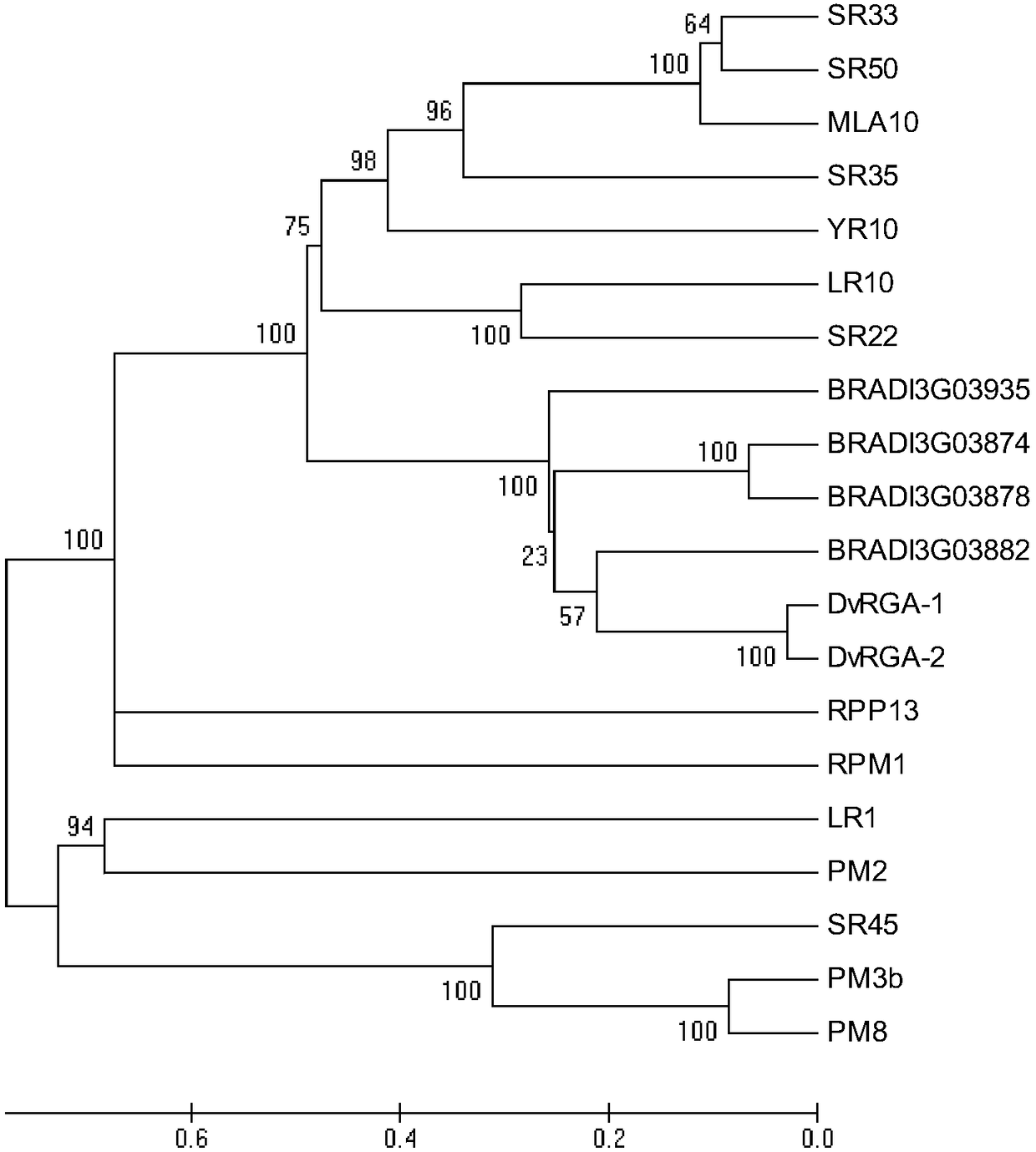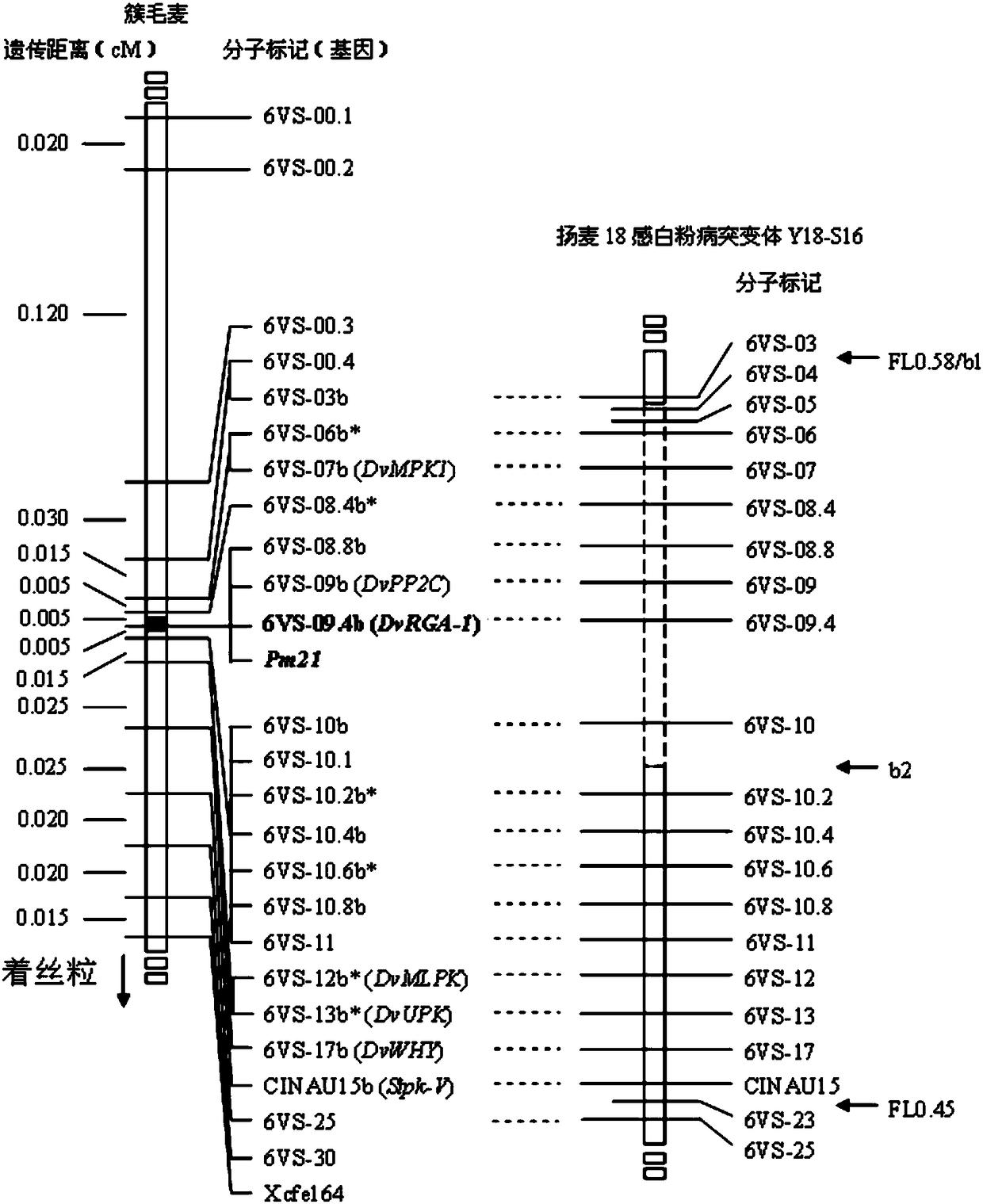Haynaldia villosa powdery mildew resistant gene DvRGA-1, DvRGA-2 and application thereof
A powdery mildew resistance gene and the technology of villous wheat, applied in the field of genetic engineering, can solve problems such as few researches, and achieve the effect of improving resistance
- Summary
- Abstract
- Description
- Claims
- Application Information
AI Technical Summary
Problems solved by technology
Method used
Image
Examples
Embodiment Construction
[0020] 1. Cloning, sequence analysis and evolutionary tree analysis of Pm21 candidate gene DvRGA-1
[0021] The present invention uses long-distance PCR technology, using P1 (5'-GAAATAATGGGCACCCCTTCTTA CTA-3') and P2 (5'-ATGCACTTACATCGTTAGTTACAACATC-3') as primers, and disease-resistant tufted wheat from the Cambridge Botanical Garden in England (known and public, Chen et al. Development and molecular cytogenetic analysis of wheat-Haynaldia villosa 6VS / 6AL translocation lines specifying resistance topowdery mildew. Theor Appl Genet. 1995,91:1125-1128) cloned a gene in the genome, because the gene is derived from the ( D asyprum v illosum), and is an analogue of disease resistance genes ( R esistance G ene A nalog), so it was named DvRGA-1. DNA sequencing found that the full length of the genomic DNA of the DvRGA-1 gene is 3699bp, and the specific sequence is SEQ ID NO. 1. The DvRGA-1 gene has three exons and two introns (see figure 1 ), RT-PCR analysis revealed that the cDNA sequ...
PUM
 Login to View More
Login to View More Abstract
Description
Claims
Application Information
 Login to View More
Login to View More - R&D Engineer
- R&D Manager
- IP Professional
- Industry Leading Data Capabilities
- Powerful AI technology
- Patent DNA Extraction
Browse by: Latest US Patents, China's latest patents, Technical Efficacy Thesaurus, Application Domain, Technology Topic, Popular Technical Reports.
© 2024 PatSnap. All rights reserved.Legal|Privacy policy|Modern Slavery Act Transparency Statement|Sitemap|About US| Contact US: help@patsnap.com










